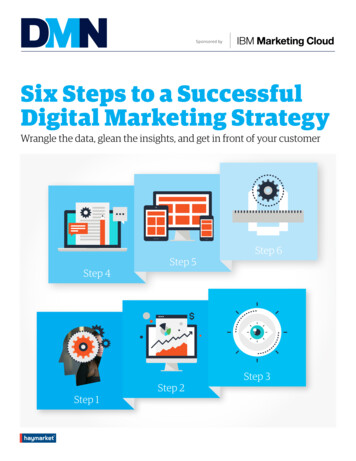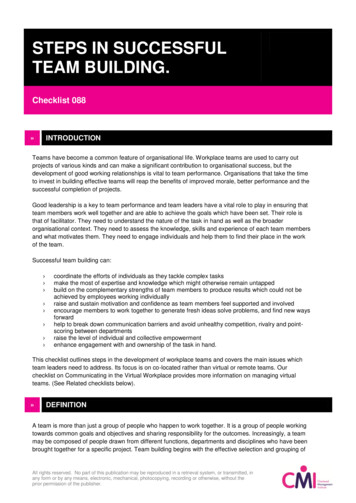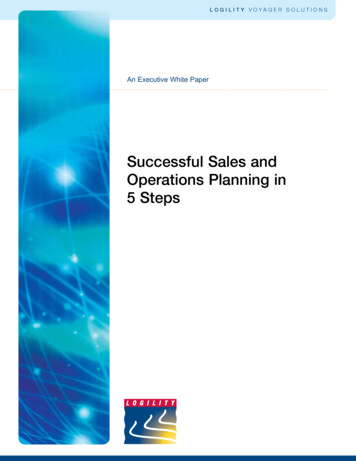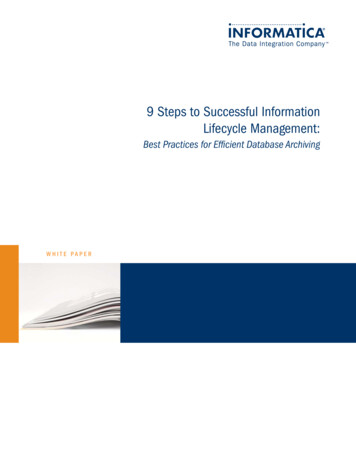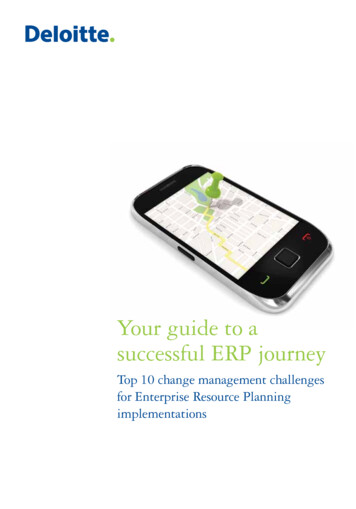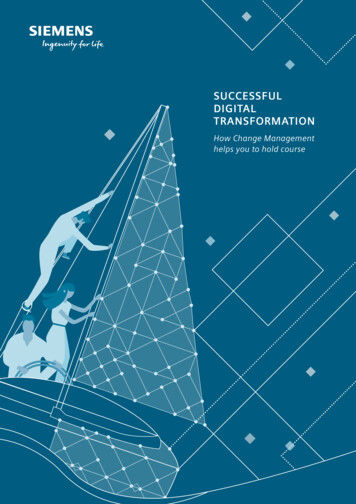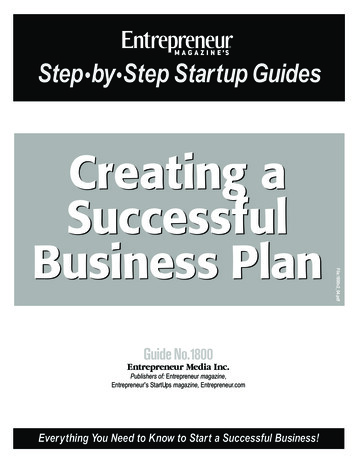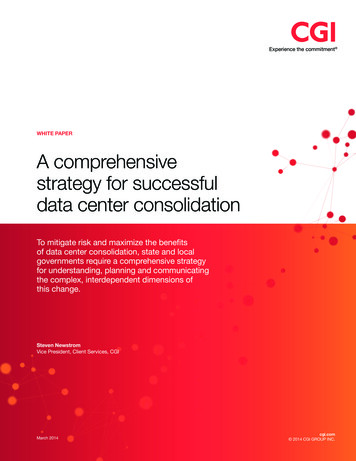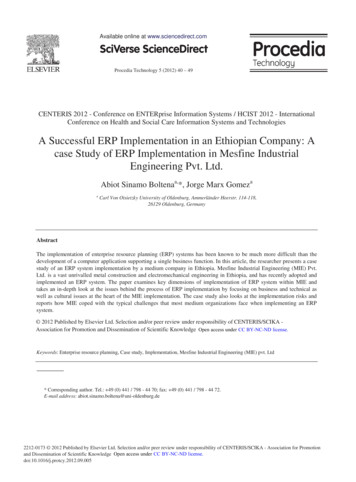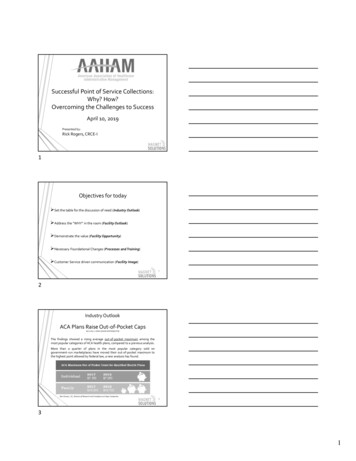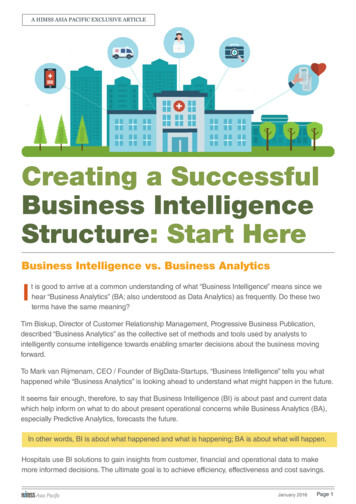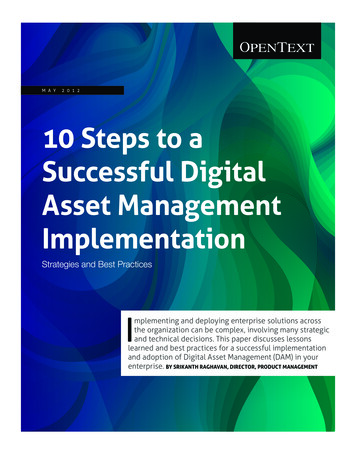
Transcription
m a y2 0 1 210 Steps to aSuccessful DigitalAsset ManagementImplementationStrategies and Best PracticesImplementing and deploying enterprise solutions acrossthe organization can be complex, involving many strategicand technical decisions. This paper discusses lessonslearned and best practices for a successful implementationand adoption of Digital Asset Management (DAM) in yourenterprise. by Srikanth Raghavan, Director, Product Management
ContentsIntroduction . . . . . . . . . . . . . . . . . . . . . . . . . . . . . . . . . . . . . . . . . . . . . . . . . . . 31. Identify the Right Product for Your Organization . . . . . . . . . . . . . . 42. Get Leadership Buy-in . . . . . . . . . . . . . . . . . . . . . . . . . . . . . . . . . . . . . . . 43. Build a Project Team . . . . . . . . . . . . . . . . . . . . . . . . . . . . . . . . . . . . . . . . . 54. Implement in Phases . . . . . . . . . . . . . . . . . . . . . . . . . . . . . . . . . . . . . . . . . 55. Use the Right Implementation Partner . . . . . . . . . . . . . . . . . . . . . . . . 66. Understand the Vendor Roadmap and Interact Regularly . . . . . . 67. Establish Governance Policies . . . . . . . . . . . . . . . . . . . . . . . . . . . . . . . . 78. Get Users on Board . . . . . . . . . . . . . . . . . . . . . . . . . . . . . . . . . . . . . . . . . . 79. Integrate DAM with Internal Systems . . . . . . . . . . . . . . . . . . . . . . . . . 810. Establish a DAM community . . . . . . . . . . . . . . . . . . . . . . . . . . . . . . . . . 8
WHITE PAPER10 Steps to a Successful Digital AssetManagement System ImplementationIntroductionRich media and digital content is pervasive in organizations and continues to grow exponentially. Coupled with today’s challenging economic environment, enterprises are focusingon operational excellence, cost-cutting, and Return On Investment (ROI) to help maintainprofitability. Digital Asset Management (DAM) is rapidly evolving from a departmental tool forarchive and library management to an enterprise-wide solution for workflow and collaboration.Industry-leading organizations consider DAM solutions as key strategic components of abroader creative and intellectual property initiative that is capable of:nnnBecoming a revenue stream by leveraging digital assets across multiple distribution andcommunication channelsReducing total cost of ownership by reusing and repurposing rich media assetsDelivering greater operational efficiency with easy access and interaction to informationand contentnAchieving operational effectiveness through collaboration, workflow, and process automationnMeeting and maintaining compliance and legal standards with audit trails and reportsThis white paper willprovide you withguidelines to ensurea smooth, successfulimplementation andgreater user adoptionof DAM in yourenterprise.Explosive growth in the DAM marketplace and many different products, platforms, and capabilities challenge organizations’ knowledge of what will work best and how to proactivelyalign programs with the company’s strategy for managing digital content, branding, video,and marketing content. It’s not just a list of features and functions. Considerations of implementation, extensibility, vendor strategy, and commitment are important when evaluatingwhich particular product or solutions will be the best for your organization.Implementing and deploying enterprise solutions for internal and external users is a complexart and involves many strategic and technical decisions. Organizations make significantinvestments to ensure the solution they deploy meets the needs of their business communityand stakeholders. These 10 steps are a collection of lessons learned from the many differentimplementations of OpenText Media Management for a variety of customers and industries.It provides guidelines to ensure a smooth, successful implementation and greater useradoption of DAM in your enterprise.EN T ER PR ISE I N FO R M AT I O N M A N AG E M EN T3
WHITE PAPER10 Steps to a Successful Digital AssetManagement System Implementation1. Identify the Right Productfor Your OrganizationSoftware-as-a-Service (SaaS) or enterprise. There is an increasing trend to cloud-basedsystems as solutions are offered by some DAM vendors. In addition, open source solutionsfrom consultants and system integrators offer custom products and implementations tocustomers. Deciding to go with these products versus an enterprise solution depends onmany factors. One key area is the organization’s available infrastructure and IT managementcapabilities and the inclination to outsource such operations outside the company. It alsodepends on the storage and usage needs of the DAM system, the network capacity, andthe distribution of users. The SaaS model, cloud-based storage, and security of content arematuring. The relatively low upfront investment, faster implementation cycle, and outsourcedIT should be compared to the ability to customize and extend the system based on theorganization’s strategic goals.The key tosuccessful projectsare leadership buy-inand an executivesponsor.Hosting or on-premise. Again, this decision is primarily based on the internal IT capabilitiesof the organization. Some companies have a fully functional IT organization and infrastructure and prefer to “own” their systems, while others like to delegate the management of theinfrastructure and products to external sources. Customers should evaluate both optionsand decide based on their use cases and internal IT policies and procedures.Understand IT rules, policies, and constraints. Many organizations have strict policiesaround their IT infrastructure, including access to external sources, firewalls, and data transfer rules. The project team should understand the IT policies so that the system can be builtto adhere to internal standards. For example, companies have very strict policies concerningexternal user access to File Transfer Protocol (FTP) sites or to provide an unsecured HTTPaccess to internal applications, typically requiring users to be authenticated via a VPN or aPortal. While designing the system, such policies should be considered in order to eliminateissues in the future.2. Get Leadership Buy-InLeadership buy-in. Successful projects require leadership buy-in and an executive sponsor.This is key to getting the project up and running and to sustain future investment in maintaining a viable and effective DAM solution. Having the support and active participation ofthe executive team is necessary in getting the essential budget, resolving interdepartmentalissues, and providing a sense of reassurance to the project team. It elevates the visibility ofthe project in the organization, impacting adoption and furthering the success of the project.Create a business plan. A formal business plan outlines what the DAM system will accomplish—its value to the organization—quantifies it, and then justifies the investment. The starting point is documenting the way things are done now and what it costs in terms of time,effort, and resources. With this as a baseline, you can project any cost-savings in time,effort, and resources when the DAM system is deployed. A business plan maps out whereyou’re at, where you’re going, and the plan to get there, and serves as a blueprint for theentire project.EN T ER PR ISE I N FO R M AT I O N M A N AG E M EN T4
WHITE PAPER10 Steps to a Successful Digital AssetManagement System Implementation3. Build a Project TeamInclude business, IT, and users. A well-managed DAM implementation typically involvesthree main groups—business, IT, and user community. This ensures that all of them arein lock step agreement on what is being built and can also resolve issues as they surface.Building a system in isolation will result in poor adoption by the users (a sense of thrusting itdown their throats) and eventually will lead to failure of the project.Become a champion of the DAM cause. Implementing a DAM system requires a culturechange in an organization. Change management and adoption is usually the greatest obstacle in a successful DAM project. The fact is that most are resistant to change, being accustomed to manual processes, home-grown solutions, and familiar creation and managementpractices of digital content. The project team has to be the champion and cheerleader tohelp people discover the productivity and quality improvements DAM offers. It is importantto get the user community involved early, listen to their worries and concerns, and ensurethey are heard and addressed. Remember that this project will fundamentally change theway people work in the organization, so the rollout should be carefully planned, communicated, and executed.Create a Digital Asset Manager role. During the initial stages of the implementation androllout, someone should “own” the system and become the point of contact for issues andplan training for users to ensure that assets are being ingested and tagged properly. Thisrole is critically important to the implementation and ongoing success of the project.Change managementand adoption is usuallythe greatest obstacle in asuccessful DAM project.The fact is that mostare resistant to change,being accustomed tomanual processes,home-grown solutions,and familiar creationand managementpractices of digitalcontent.4. Implement in PhasesLeverage and address lessons learned. An agile approach to implementation meanssmoother rollout and the ability to test feature based on the valuable feedback provided byusers during the process. DAM implementations are complex and include integrations withinternal systems, data models, product master data sets, naming conventions, and existingprocesses. A phased implementation allows you to mitigate project risks.Roll out to new groups in phases. If you are considering a system for ten or more groupswithin your organization, identify the three or four departments that include quick adoptersand have a mix of simple and complex requirements. This will allow you to establish somequick wins and then expand the deployment to the other departments using the first phaseto assist in the follow-on training.EN T ER PR ISE I N FO R M AT I O N M A N AG E M EN T5
WHITE PAPER10 Steps to a Successful Digital AssetManagement System Implementation5. Use the Right Implementation PartnerLeverage a vendor or partner with credible experience in implementation. Typically,vendors have extensive experience in designing, implementing, and deploying their products.For example, the OpenText Media Management professional services team has performeda wide range of DAM implementations for more than 14 years and has extensive experienceworking with a large variety of companies and customers. We also work with our partnerchannels and have many successful implementations, continuously improving and enhancingour partners’ abilities to build and deploy our solutions.Build a team that can eventually take ownership of DAM. DAM solutions are dynamic andflexible, meaning they don’t remain static. Build a team that knows your operation and whereit plans to go, and build use cases to apply to the DAM solution. This team should be technicallysavvy in order to understand and customize the system. Look for ways to streamlineand automate processes, integrate and share data with other systems, and provide userswith advanced tools such as advanced search templates and casual browse/downloadcapabilities. Consider security, compliance, and reporting that will be needed for the future.6. Understand the Vendor Roadmapand Interact RegularlyKnow the product roadmap and provide feedback on new features and trends andtechnology. Vendors often provide periodic briefings on the product roadmap throughinteractive forums such as customer advisory boards, webinars, and social groups. AtOpenText, we have private and sponsored user groups for our Media Management solutionand regular roadmap webinars to share current product development plans. We also havean active Customer Advisory Board as our listening post to the DAM community to directfeedback on new trends in the market, changes to business processes, and pain points. Allthese activities help drive new features in upcoming releases. Customers who continue tobe involved and interact with the vendor product team are in a better position to know whatis coming, plan for it, and achieve success in the long run.EN T ER PR ISE I N FO R M AT I O N M A N AG E M EN TAt OpenText, we haveprivate and sponsoreduser groups for ourMedia Managementsolution and regularroadmap webinars toshare current productdevelopment plans.We also have an activeCustomer Advisory Boardas our listening post tothe DAM communityto direct feedback onnew trends in the market,changes to businessprocesses, andpain points.6
WHITE PAPER10 Steps to a Successful Digital AssetManagement System Implementation7. Establish Governance PoliciesBulk and ongoing consumption of assets. Customers are surprised at how challengingit is to get digital content into the system. During initial implementation, customers typically deal with multiple versions of digital content in various formats, distributed to one ormore internal backup disks and network drives. In addition, content is also received fromexternal agencies and partners, and this content needs to be processed and consumed.Establishing a well thought out plan to streamline and automate consumption is key part ofimplementation planning.Tag assets with proper metadata. The phrase “garbage in, garbage out” applies to DAMsystems. Metadata is a critical component to manage and find digital assets in the system.An asset ingested with bad metadata makes it challenging to find and correctly tag later. Thegovernance policy should clearly define mandatory metadata and have a librarian or poweruser review incoming assets for consistency before the asset is released for consumption.This will ensure that the assets can be found by users accurately and metadata, taxo
external user access to File Transfer Protocol (FTP) sites or to provide an unsecured HTTP access to internal applications, typically requiring users to be authenticated via a VPN or a Portal. While designing the system, such policies should be considered in order to eliminate issues in the future. 2. get Leadership buy-In Leadership buy-in. Successful projects require leadership buy-in and an .
